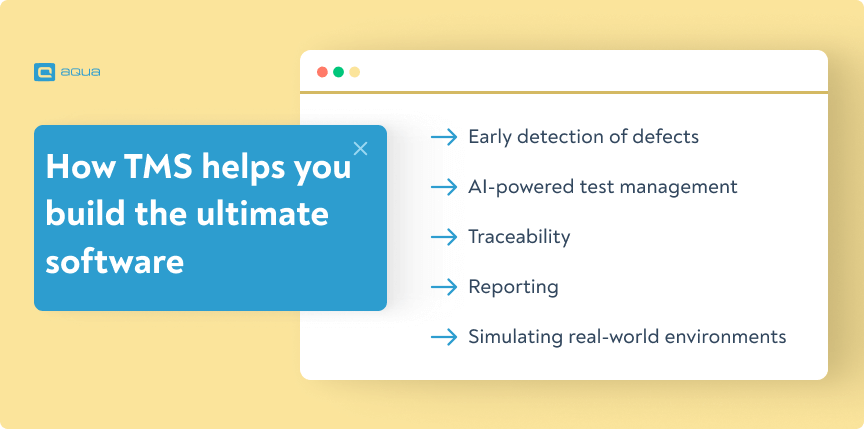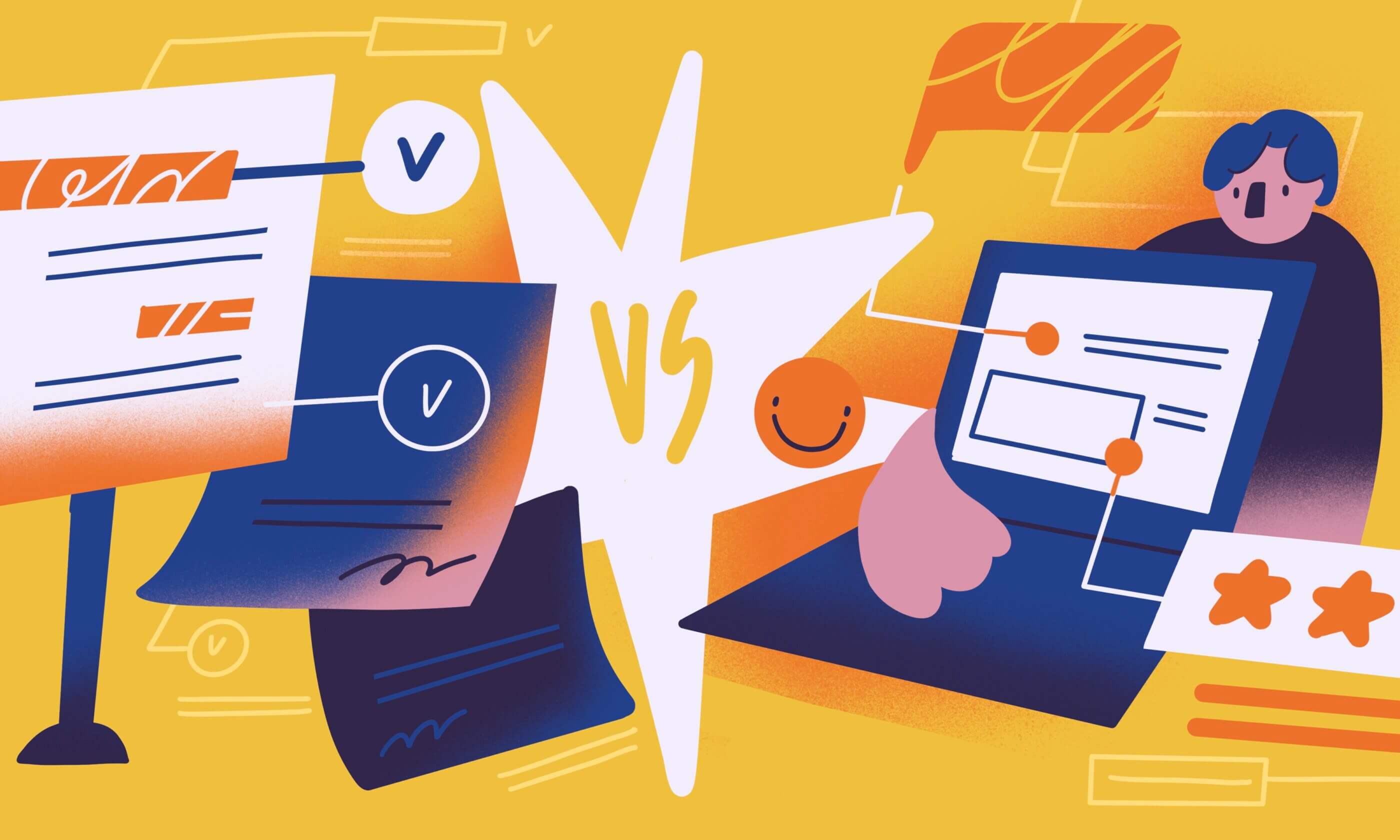What is verification?
Verification is the process of evaluating whether your product, system, or component meets the specifications and requirements which were defined at the beginning of the development cycle. It ensures that the product is built correctly according to these standards.
Think of verification as double-checking your work before submitting it. In fact, studies show that 56% of defects are introduced during the requirements phase and can be caught during verification.
Verification answers a simple question: Are we building the product right? It doesn’t focus on how the product performs in real-world scenarios, but rather if every part is built as intended before the product is complete.
Here’s what verification is not:
- It doesn’t involve real-world testing or environment simulations
- It’s not testing how the software behaves under stress.
- It’s not about user satisfaction.
Instead, it’s about examining the code, design, and documentation to ensure everything aligns with the predefined standards. Now let’s define validation and you will see the conceptual differences.
What is validation in testing?
Validation, on the other hand, is the process of evaluating a product to ensure it meets the needs and expectations of the end user. It checks if the software functions correctly in real-world conditions. With this testing, you aim at one thing: ensuring the final product is fit for its intended use.
Validation asks the critical question: Are we building the right product according to the user’s expectations? It’s all about making sure the software behaves as expected when used by actual users. This makes validation essential for catching the mentioned gaps.
Here’s what validation is not:
- It’s not checking if the software meets internal specs.
- It’s not about reviewing code or documents.
- It’s not a theoretical exercise—real-world testing is key.
Validation focuses on testing the software in practical, user-driven scenarios to make sure it’s not just functional but valuable to the end user.
Verification vs validation: what are the key differences?
“Verification is the testing of the system in a non-operational state. Examples: Requirements Reviews, Design Reviews, Code Walkthroughs, and Code Inspections. Validation is testing the software in an operational state. Examples: Unit testing, integration testing, and system testing.”
Without understanding the key differences between the two concepts, you’ll struggle a lot in your journey to build a high-quality software product. Let’s break down the differences in a neat format for you:
| Aspect | Verification | Validation |
|---|---|---|
| Definition | Ensures the product is built correctly, meeting the specified requirements. | Ensures the product works as intended in real-world conditions. |
| Focus | Internal processes, specifications, and designs. | External user needs, functionality, and usability. |
| Question Answered | Are we building the product right? | Are we building the right product? |
| Timing | Happens during the development phase. | Happens after development, during testing or deployment. |
| Method | Reviews, inspections, walkthroughs, and static analysis. | Functional testing, system testing, and user acceptance testing (UAT). |
| Environment | Performed in a controlled environment. | Performed in a real-world or simulated environment. |
| Outcome | Confirms that the product meets technical specifications. | Confirms that the product meets user expectations and requirements. |
As mentioned above, these two together will help you build the desired software in all aspects. How? You can use a modern Test Management System (TMS) to enhance the process and ease it up significantly. Here is how a TMS (especially an AI-powered) will help you:
- Early detection of defects: AI helps you catch defects earlier, ensuring the product is built correctly from the start.
- Traceability: A TMS ensures 100% traceability between requirements and test cases, verifying that each piece of the product is covered.
- AI-powered test management: AI helps generate test cases and run and track test scenarios, improve test coverage, generate test data, making sure the final product aligns with end-user needs and expectations.
- Reporting: With customisable reporting, an AI-powered TMS allows you to track every test case back to its corresponding requirement. This transparency is essential for both verification and validation.
- Simulating real-world environments: With advanced automation, a TMS can simulate real-world conditions to validate the product’s performance in various scenarios, ensuring it works as intended.

An AI-powered TMS – aqua cloud helps you take charge of both processes. Bringing 20 years of experience and German quality to the QA, aqua is your ally when dealing with verification and validation.
aqua helps you catch defects early with 100% traceability. This way, you ensure every requirement is covered so you build the product right from the start, avoiding costly rework. With AI-powered features, you can generate test cases, requirements, and test data in just three clicks, speeding up the process and reducing manual errors. On the validation side, aqua cloud provides a central repository and real-time visibility, ensuring your software meets user needs. The Capture extension helps simulate real-world scenarios and record bugs instantly, ensuring thorough testing from both technical and user perspectives. Ready to combine the power of verification and validation in one platform?
Enhance verification and validation through 100% traceability and visibility
Here’s your interactive Testing Time Machine that brings the verification vs validation concept to life. This element lets you explore two parallel software development universes – one following a verification-first approach and another taking a validation-first path:
Examples of Verification and Validation
Now that you know the theoretical differences, let’s put them into practice for you:
Verification Example:
Imagine you are part of a software development team creating a new mobile application. Your journey starts with the following:
- Code Reviews: You conduct thorough reviews of the code to ensure it meets the design specifications, focusing on functionality and structure.
- Unit Testing: Each function of the application is tested individually to verify that it works as intended. This step helps you catch bugs early in the process.
- Design Checks: You compare the user interface against design documents, confirming that visual elements align with the intended design.
- Documentation Verification: You ensure that technical documentation accurately reflects the implemented features. It provides clarity for future developers and testers.
These steps help you catch defects before the product reaches the testing phase, serving the purpose of verification 100%.
Validation Example:
Now, picture your bank launching a new online banking feature. Once development wraps up, your team starts a user acceptance testing (UAT) journey filled with the following steps:
- Real User Testing: You invite real customers to test the application, observing their interactions and collecting valuable feedback.
- Task Scenarios: Users perform critical tasks like transferring funds and checking balances. This allows you to understand whether the application meets their expectations.
- Feedback Sessions: After testing, you hold sessions with users to discuss their experiences. This will uncover the pain points and areas for improvement.
- Final Adjustments: Based on user feedback, your team makes necessary changes to enhance usability and ensure the product aligns with customer needs.
By engaging with real users, you validate that the final product is not only functional but also user-friendly.
As you see, verification is process-focused, meanwhile, validation is more final product-oriented.
Conclusion
In this guide, you’ve learned that verification ensures you are building the product right through processes like code reviews and unit testing, while validation confirms you are building the right product by engaging real users and gathering their feedback. Undoubtedly, both play vital roles in ensuring software quality and alignment with user needs. So you need them together.
In your journey to combine both efforts, aqua cloud takes away the pain of testing by providing a seamless, AI-powered experience. aqua provides you with features like 100% traceability, and quick generation of test cases, requirements, and test data. With real-time visibility into your QA process, aqua empowers you to focus on delivering a high-quality product that meets user expectations. Ready to streamline your testing and improve quality?
Maximise the power of verification and validation with an all-in-one, 100% AI-powered TMS


















